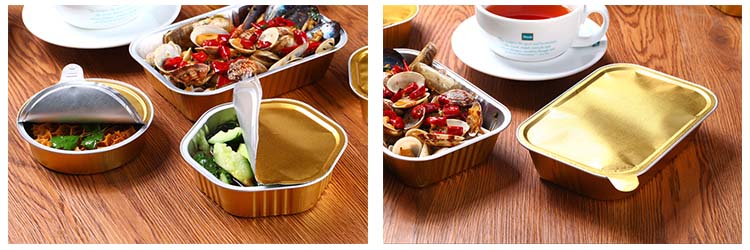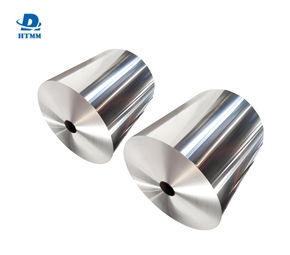Why Aluminum Foil 8011 Alloy is a Good Choice for Food Containers
The ideal aluminum foil is made of an alloy of aluminum that has characteristics that make it ideal for food related container manufacture. First, it possesses exceptional formability allowing the aluminum foil to be die cut or drawn into nearly any size or contour that is required without tearing. In practical terms, it is implies that a manufacturer can deliver the same quality of container that may be the size of a small takeaway box or a large catering tray but keeps their manufacturing parameters consistent.

Next, 8011 alloy aluminum foil has strong barrier properties as it stops moisture, oxygen, and, or light. Protecting against these properties is fundamental to preserving the freshness, flavor, and, nutitional properties of food products. The chemical nature of 8011 aluminum foil it to be food safe, which eliminates any risk to people using aluminum foil and prevents anything hazardous from migrating into food, even when storing food, cooking food, or reheating food.
Other positive characteristics include the high levels of thermal or cold resistance. Lubricated aluminum foil containers can tolerate being baked in an oven or frozen in a deep freeze. This fact demonstrates their flexibility for food packaging and cooking purposes. These traits exemplify why alloy 8011 was the clear winner in trusting companies large and small that took interest in using lubricated container foil.
Why is Lubrication Required for Containers
Aluminium foil has many advantages by itself, but adding even a thin layer of food-grade lubricant to the backing paper enhances these benefits in the containers manufacturing process. Punching and forming aluminum foil into containers requires forcing the foil to conform to the molds during production. The foil will build friction resistance as it’s being pushed through the molds for stamping. Without lubrication, the foils build up generates sticking, wrinkling, and possibly tearing.. Lubrication is thus most effective because it reduces forces associated with resistance of the foil allowing it to push or form through the molds with essentially forming contact, and it also reduces scrap ratios!.
By introducing lubrication, it not only creates efficient cycles during production cycles but maintains the quality of the containers surface as well. In some cases scratching, or marking can occur in the foil as it gets pushed through or formed into molds. Reduced scratching/ marking is extremely essential to make sure and the containers can be clean and visually appealing when they leave production. High-speed production lines with automated equipment that used Lubricated Aluminum Foil, rely on this benefit for reducing down time and tool wear so that they can save money and have more output.
Lubricated vs. Non-Lubricated Container Foil
When it comes to gray aluminum foil for the manufacture of food containers, international buyers will typically have the option of choosing between lubricated and non-lubricated container foil. Basically, the two choices differ only because of how they will be used. The lubrication option is more convenient because the container foil comes with the lubricant already chemically bonded to the surface of the foil. This means that manufacturers can simply roll out lubricated container foil right from the package without having to do any additional processing. This also offers consistency, reduced production steps, and especially for larger packaging manufacturers, process efficiency and speed. Non-lubricated container foil will have no surface treatment applied to it at the time of purchase and buyers that choose these grades will implement their own lubricant as they see fit according to their specifications, production standards, and/or regional regulations. Again, while the fact that non-lubricated container foil involves an additional production step there are some benefits that are offset with added flexibility regarding their type and amount of lubricant.

Both options represent food-safe material, however, lubricated aluminum foil is a faster and more convenient option for high-volume production, while non-lubricated container foil is widely used by smaller producers and for situations where specific performance requirements are required.
In conclusion, aluminum alloy 8011 is the most dependable choice available for food container manufacturing, given its strength, formability, and protective capabilities. When lube is applied, the efficiency, quality, and destructive processes can be made more efficient and durable. Ultimately, the final decision rests with global purchasers choosing whether lubricated container foil or non-lubricated container foil will best suit their production processes, but both utilising the truly excellent performance capabilities of Lubricated Aluminum Foil in use.
Given the increasing demand for safe, efficient and sustainable food packaging, the use of aluminum alloy 8011 to manufacture Lubricated Aluminum Foil will continue to develop and grow. It will undoubtedly remain a key material in the food container industry.

.jpg)



